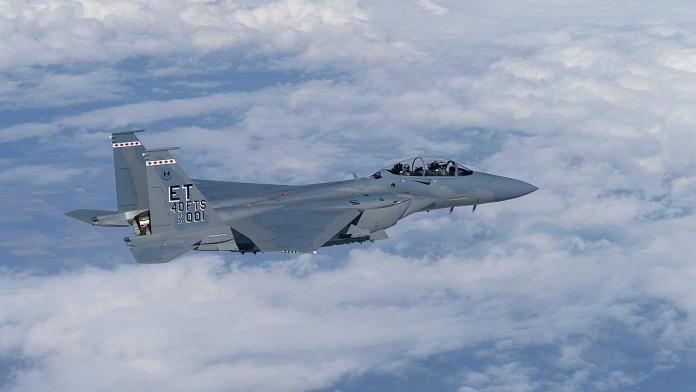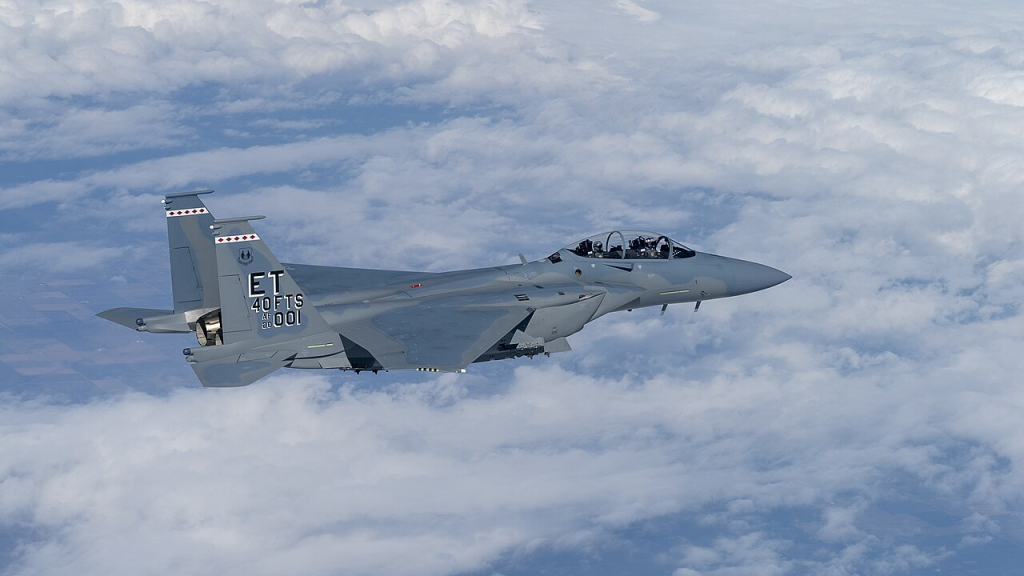
“Speed is life, but firepower is final.” That old motto for fighter pilots never rang truer than in 2025, when combat aircraft are not only faster and stealthier but also pack unheard-of firepower. In a world of contested air, the capability to deliver the kill from standoff distance or overwhelm an enemy’s defenses with missiles might just win the battle before even entering the dogfight.
It is a list that takes the world’s most armed operational combat aircraft into account today, based on the newest specifications, defense industry reports, and operational doctrine. These aircraft are the epitome of weapons integration, sensor fusion, and combat versatility, ranging from stealthy killers to unsubtle “bomb trucks.” Readers will get a detailed look at their payload capabilities, mission philosophies, and technological advantage without leaving out the engineering geniuses behind them.

1. Boeing F-15EX Eagle II
The Boeing F-15EX Eagle II takes the lead with its whopping 29,500-lb payload capacity. It was built without stealth compromise, and it excels at raw missile saturation and raw ordnance delivery. Its open mission systems design enables easy integration of next-generation munitions, keeping it pertinent long after the 2020s. In combat doctrine, the F-15EX is commonly tasked alongside stealth fighters such as the F-35 to deliver colossal salvos on targets spotted by its low-observable colleagues. With over 20 air-to-air missiles loaded in the AMBER rack system, it is the most weaponized US Air Force and global fighter. Its Mach 2.5 top speed for quick ingress and egress makes it a deadly escort and strike aircraft.
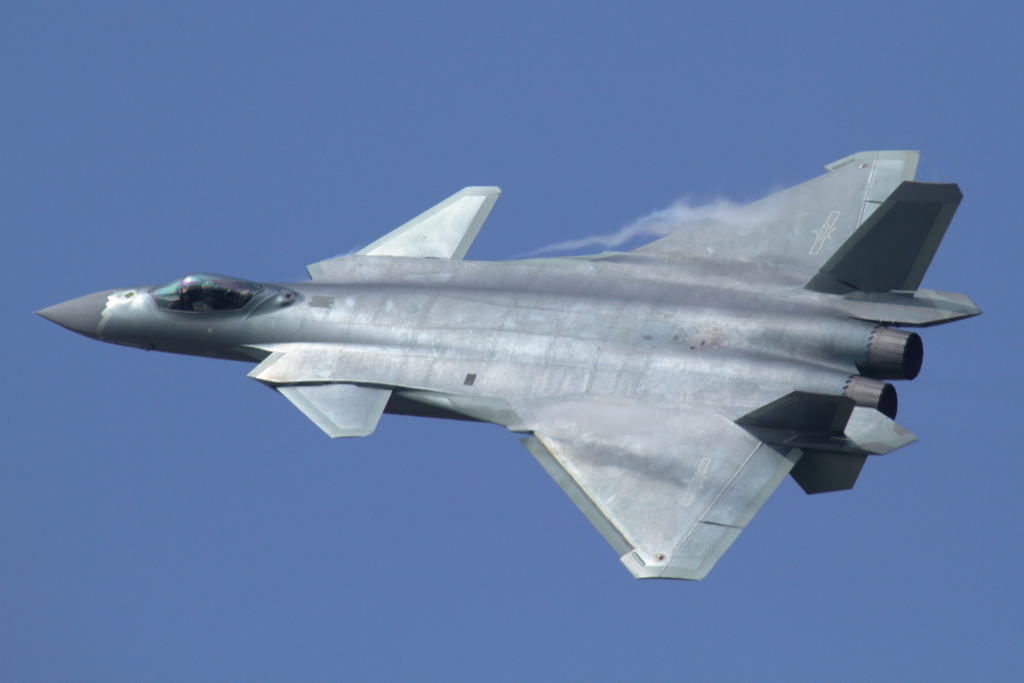
2. Chengdu J-20 Mighty Dragon
China’s Chengdu J-20 marries stealth shaping and a huge 24,000 lb payload. Unlike Western designs, which are focused on maneuverability for close-range combat, the J-20 is designed for long-range combat and sensor reach. It is said to have a high-power AESA radar installed, which would make it an ideal candidate for battle management missions in networked airspace. Its internal bays are stealth-protective whereas hardpoints out of sight maintain capacity on stand-by in the event invisibility is not paramount. The J-20 confirms China’s strategic interest in controlling large volumes of Western Pacific airspace using firepower and networked command over dogfight maneuverability. Production has reached more than 100 a year to justify its increasing visibility in the People’s Liberation Army Air Force.

3. Sukhoi Su-57 Felon
Russia’s Su-57 combines stealth, agility, and a 22,000 lb payload of weapons into one platform. Although it possesses a larger radar cross-section than Western stealth aircraft, its internal bay arrangement two main tandem bays and two side bays enables it to carry beyond-visual-range missiles and short-range interceptors without trading off on profile. Its 3D thrust vectoring nozzles provide supermaneuverability, allowing it to turn tight and perform complex air maneuvers. The Su-57’s multirole ability also supports precision-guided bombs and anti-ship missiles, allowing it to be a multirole threat that can do both air dominance and deep strikes.

4. Dassault Rafale
France’s Dassault Rafale carries 20,900 lbs of weapons in an omnirole capability. Able to perform nuclear strike, anti-ship missions, and air superiority all in one flight, it mates weapons from the Meteor long-range missile to SCALP cruise missiles through one of the most sophisticated sets of sensor fusion outside of stealth platforms. Its SPECTRA electronic warfare system improves survivability, while aerodynamic flexibility enables easy switch between mission types. Payload capacity and integration flexibility of the Rafale position it as a backbone of French and allied air forces.

5. Eurofighter Typhoon
Originally designed for air superiority, today’s Eurofighter Typhoon features a 20,000 lb weapons capacity, weighing speed and maneuverability against strike performance. Its AESA radar and latest Tranche 5 upgrades such as drone teaming and advanced electronic warfare have stretched its role to deep strike and enemy defense suppression. Instead of stealth, the Typhoon has speed, height, and sensor range to hit first. This adaptability makes it an entity to be reckoned with in Middle Eastern and European air forces.
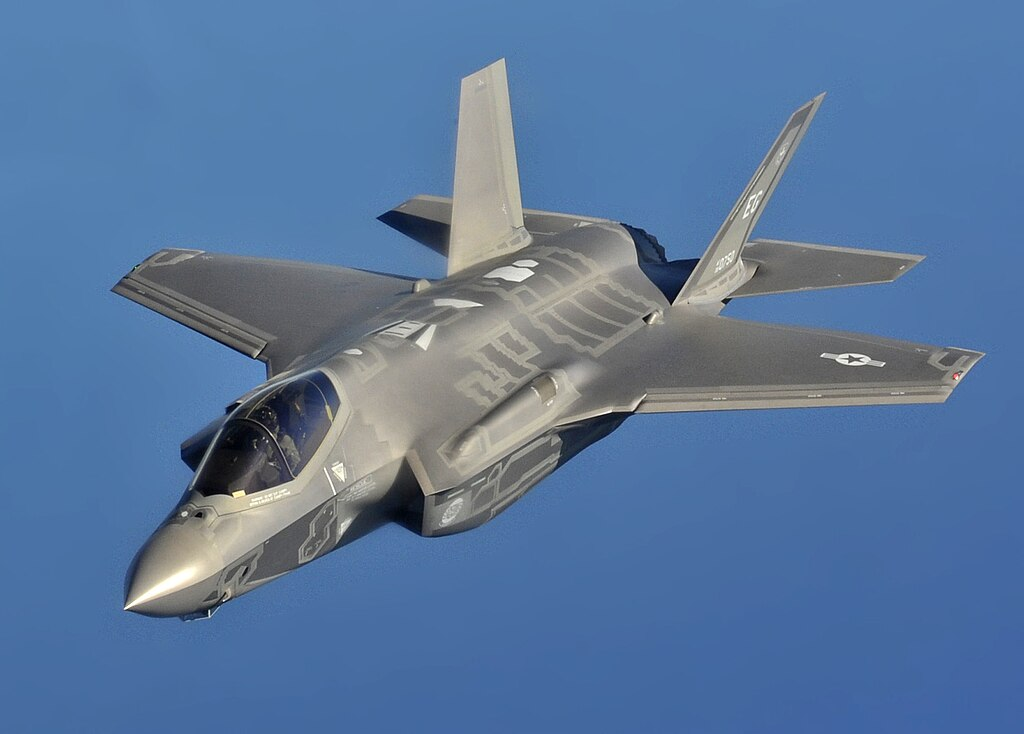
6. Lockheed Martin F-35 Lightning II
The F-35’s 18,000 lb payload is hidden behind stealth and accuracy priority. Onboard, it can carry 5,700 lbs to have a radar cross-section comparable to a golf ball, as well as six external hardpoints for additional load if needed. Its advantage is networked combat: advanced sensors and secure data links enable it to serve as a forward node, guiding air strikes by aircraft such as the F-15EX or drones. This combination of stealth, connectivity, and multirole employment makes it one of the most modern fighters in the military arsenal today.
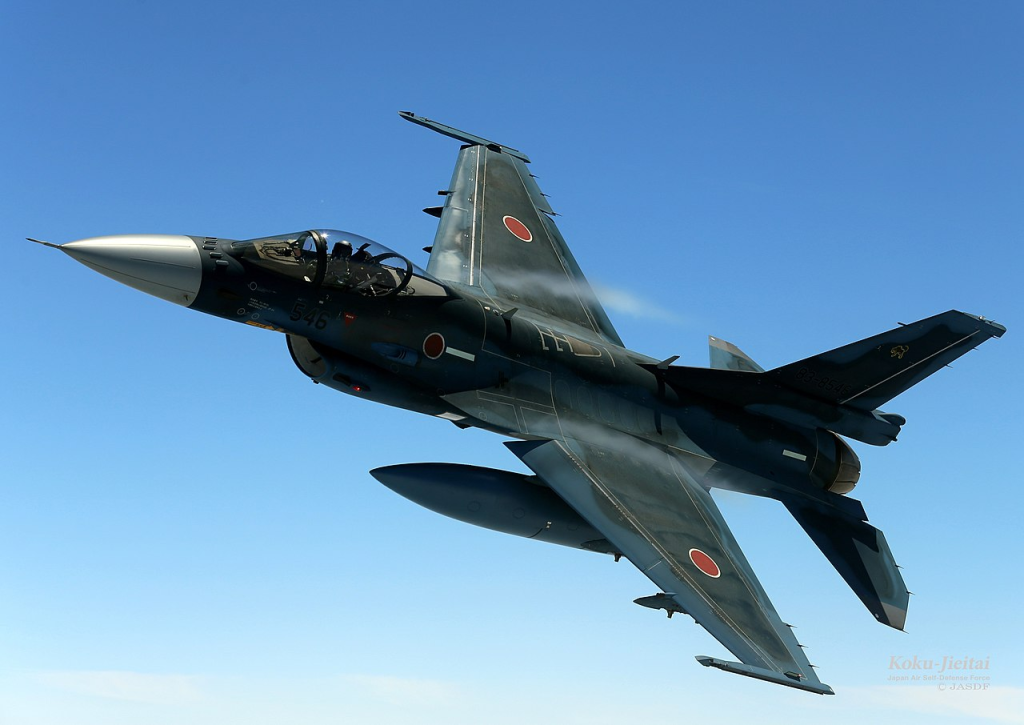
7. Mitsubishi F-2
Japan’s Mitsubishi F-2 provides 17,824 lbs of payload capacity, tailored for naval defense. Greatly modified from the F-16 but inherited from it, it features an increased wing area, use of composites, and one of the first AESA operational radars, the J/APG-1. Its configuration accommodates out-of-range anti-ship and multirole missions, with which to defend Japan’s vast maritime terrain with precision strike and air-to-air. Non-stealthy, but with its payload and range, it is a regional titan.

8. Boeing F/A-18E/F Super Hornet
With 17,750 lbs of payload armament available, the Super Hornet is the US Navy carrier-based workhorse. Constructed for heavy-duty versatility, it can deliver heavy payloads off carriers, land with unused ordnance, and redeploy rapidly. The most recent Block III modernization includes stealth shaping, 10,000-hour airframe lifespan, and leading-edge cockpit technology. Its ability to integrate with a vast number of weapons and its function in manned-unmanned teaming cement its position in naval aviation.
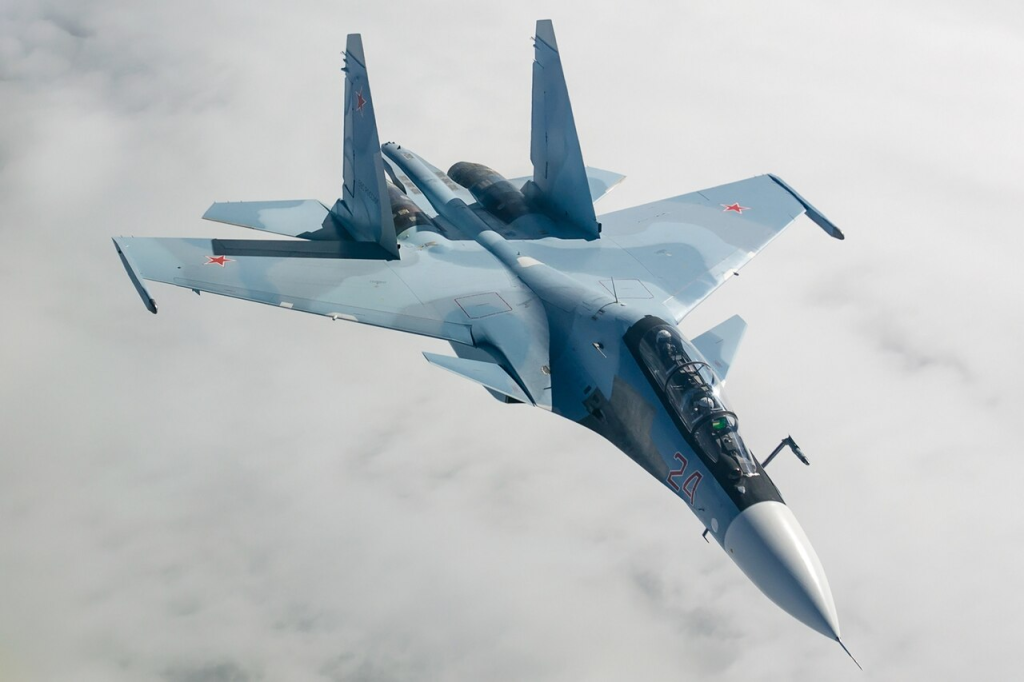
9. Sukhoi Su-30
Its 17,673 lb maximum payload and twin-seat design make the Su-30 a long-range multirole fighter perfectly adapted for large countries with large airspace. It can perform air-to-air combat, precision bombing, and maritime patrol all in the same mission. With air-to-air refueling within flight and the capability to stay on extended sorties, it has been exported globally and modified to suit different national needs. Its range and flexibility have seen it become a strategic tool in a variety of air forces.
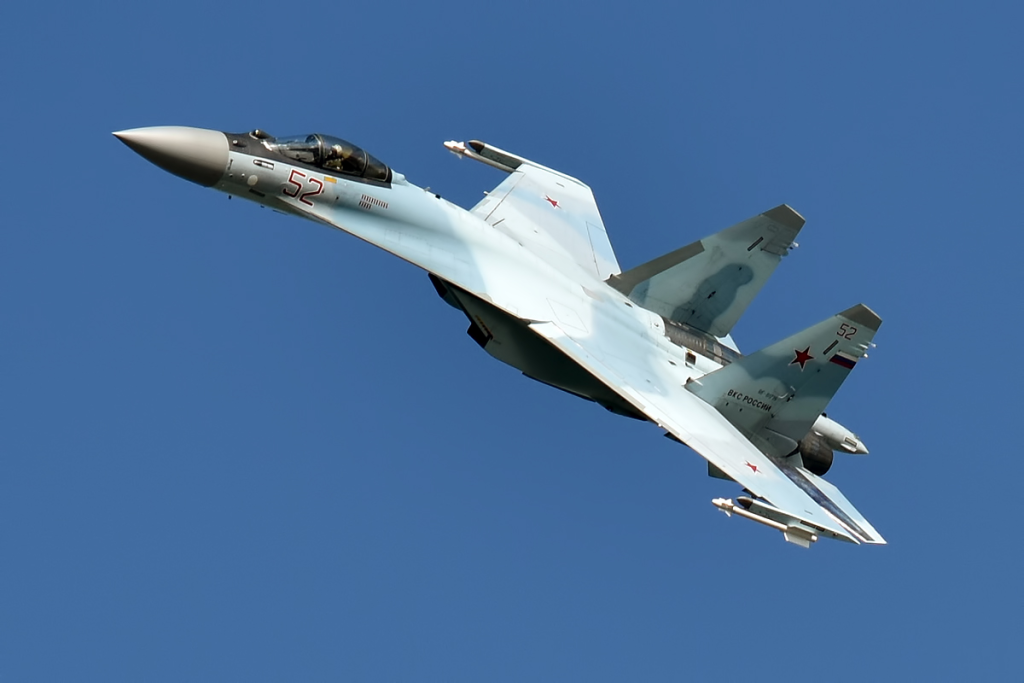
10. Sukhoi Su-35S
Russia’s Su-35S has a weapons load of 17,632 pounds and is the last in the line of non-stealth Flankers. Fitted with thrust-vectoring nozzles and a new radar, it has extraordinary maneuverability with long-range strike. Syrian operational deployment has shown it to be effective at bomber escort and precision strikes. It is not stealthy shaped, but with its electronic warfare proficiency and kinetic performance, it is a formidable opponent in contested air space.
The most heavily armed combat aircraft of 2025 exhibit a range of philosophies from stealth-first planes that hide and seek until they attack, to unashamed payload-maxers that saturate defenses with sheer quantity. Advances in sensor fusion engineering, electronic warfare, and weapon integration have blurred the distinctions between air superiority and strike missions. To military air enthusiasts, they are not just war machines; they are the culmination of decades of design genius, strategic brilliance, and relentless pursuit of air superiority.
